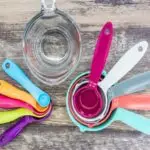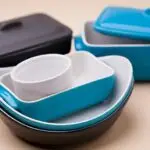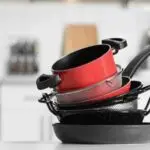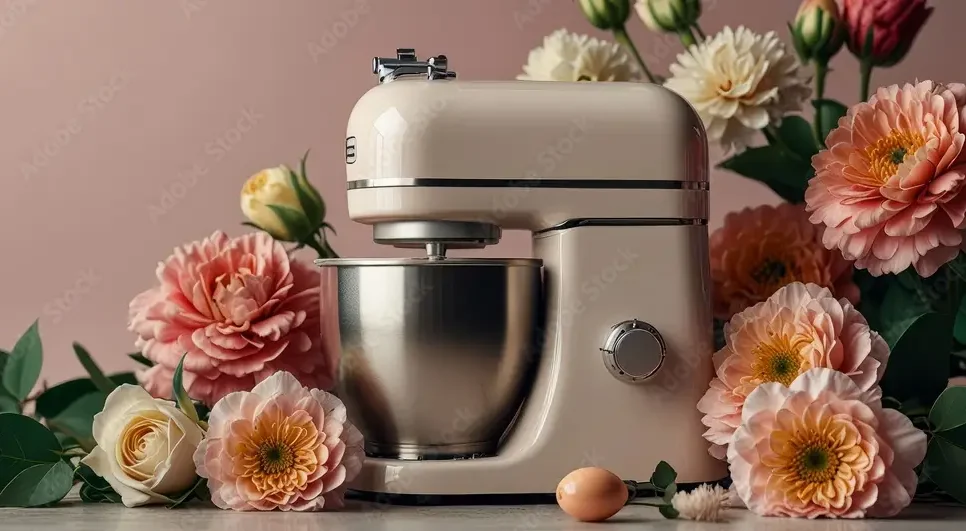Discover the Benefits of Wooden Cooking Utensils: A Comprehensive Guide
Wooden cooking utensils have been a major part of kitchens worldwide since time immemorial. These tools are durable, eco-friendly and have many other benefits that make them the number one option for cooks both professional and amateur as well. This guide is comprehensive enough to give us every detail we need about Best Wooden Kitchen Tools including their background, kinds, advantages and how they should be managed.
Introduction to Wooden Cooking Utensils:
What Are Wooden Cooking Utensils?
These kitchen apparatuses are made mostly from wood which is obtained through various woody plants. Those tools include spoons, spatulas, forks, rolling pins and salad tossers among others. Its gentle feeling on pots and pans as well as its beauty makes it a regular sight in most kitchens across the globe.
History Cooking:
Since prehistoric times when they were constructed using locally available materials, these wooden tools came into existence. Traditionally wooden implements were employed for everyday meal preparation, cooking and serving. The craftsmanship of wooden tools has changed over time but their basic function in the kitchen has remained constant.
Benefits of Using
Health & Safety:
Safety remains one of the biggest merits of using wooden tools for cooking. Unlike plastic items that release harmful chemicals if exposed to hot temperatures because they can melt, wooden ones are heat proof and do not leech compounds into foodstuffs. Furthermore, it possesses natural antimicrobial properties making it hygienic for use in kitchens.
Durability & Longevity:
They are known to last long due to their ability to withstand pressure; hence reducing expenses on buying new ones after some time plus maintenance costs incurred with regard to kitchen cleaning services. If properly maintained they will serve you for years giving value for money spent on purchasing them hence considered a cheaper option than other types found on the market today because they hardly break or wear out during rigorous use.
Eco-Friendly Choice
Wooden utensils are the best choice for preserving the environment. Wood is a renewable resource and many wooden gadget are being made from sustainably sourced materials. In contrast to plastic gadget which end up as landfill waste, wooden ones are biodegradable and have less environmental impact.
Types of Wooden Cooking Utensils
Wooden Spoons:
Versatile wooden spoons are needed for stirring, mixing and serving different foodstuffs. They come in various sizes and shapes designed for specific purposes making them perfect for any kind of cooking. These gentle edges won’t scratch or destroy surfaces of your pots.
Wooden Spatulas:
Are ideal for flipping, turning, scraping grilled foods. Their flat wide surfaces make it easy to turn over delicate items like fish fillets or pancakes without breaking them apart.
Wooden Forks:
They can also be used to serve salads, pasta among other kinds of food. Strong prongs facilitate picking up any meal without causing harm.
Wooden Rolling Pins:
These pins are used mainly in baking; their purpose is to apply equal pressure when rolling out dough so that thickness remains uniform throughout the whole piece with no lumps or bumps on its surface due to sticking dough.
Wooden Salad Tossers:
Made especially for mixing and serving salads by using long handles together with broad paddles which allows one to toss evenly coated salad ingredients.
How To Care For Wooden Cooking Utensils?
Cleaning tips:
A good cleaning habit goes a long way in keeping your wooden gadget in fabulous condition . Wipe them off with warm water mixed with mild soap immediately after use . Avoid soaking them as wood can split or warp if exposed over a lengthened period of time under water.
Storage Solutions:
To avoid moisture which can cause mildew, store the wooden tools in a dry place. The ideal places to store them are spoon trays or ventilated drawers.
Regular Maintenance:
Sometimes apply food-grade mineral oil on wooden gadgetto maintain their sheen and prevent them from drying out. This also helps them absorb less smell of food and stains.
Choosing the Right Wooden Utensils
Types of Wood Used:
Different materials used for making cooking gadget have different characteristics. Popular types include maple cherry bamboo olive wood among others. Maple is made more resistant to staining yet is very durable; cherry wood gets darker with time whereas bamboo is light weight, eco-friendly and olive has unique grain patterns.
Craftsmanship and Design:
The quality of wooden gadget depends upon how they were constructed and designed. Look for items characterized by smooth surfaces without any visible seams or grain lines and handles that feel comfortable in your hand. Poorly created tools will be sharp or splintery at worst.
Size and Shape Considerations:
Consider the size and shape of the utensil you are buying with respect to what it will be used for while cooking. Small tools work well when making minute adjustments during recipe preparations while large ones come in handy when dealing with bulky ingredients.
Comparing Wooden Utensils to Other Materials
Wooden vs. Plastic Utensils:
Wooden spoons are a much safer alternative than plastic spoons that are more environmentally friendly as well as sustainable. In case of high temperatures, plastic may melt releasing toxic substances into food whereas wood never melts under heat but remains non-toxic all through.
Wooden vs. Metal Utensils:
Metallic tools though tough enough they can damage non-stick cookware by scratching them deeply along their surfaces unlike wooden ones which are gentle on all types of pans hence prolonging their lifespan.
Wooden vs Silicone Utensils
Silicone spatulas are heat resistant and flexible though they may not feel as solid as wooden ones. Wooden tools offer a natural way of holding things firmly without being too harsh on kitchen appliances.
Popular Brands for Wooden Cooking Utensils
Top-Rated Wooden Utensil Brands:
Some of the best known producers of high-quality wooden cooking utensils include OXO, Berard, and Early wood. These brands use premium wood to produce a full line of products that are both durable and efficient.
Budget-Friendly Options:
For people who do not want to spend too much money on utensils, companies such as Totally Bamboo or Norpro sell affordable wooden spoons which are reliable. Offering quality combined with low prices has made these brands quite popular.
Premium Choices:
Shun and Williams-Sonoma are two examples of luxury brands that make great looking wooden utensils with excellent craftsmanship. Anyone interested in getting a tool that works well and looks just as good should consider one of their higher-end models.
DIY Wooden Cooking Utensils
Crafting Your Own Utensils:
Making your own wooden utensils can be both satisfying and gratifying. By doing this, you will have control over the size, shape, and type of wood used thus ending up with kitchenware that is truly unique from what others have.
Tools Needed:
Basic woodworking tools like carving knife, sandpaper, wood finish etc., will be necessary to make your own wooden spoons. You must also put on safety gear such as gloves and goggles while working on it.
Step-by-Step Guide:
Begin by choosing the kind of wood you would like to work with before drawing your idea out on paper. Start carving it using a knife until it becomes smooth then apply food-safe wood finish in order to preserve the beauty its surface naturally possesses.
Sustainability of Wooden Cooking Utensils
Renewable Resources:
Wooden wares come from renewable resources hence they are more sustainable. Many manufacturers get their wood from forests that are managed in a responsible manner hence having minimal ecological impact.
Environmental Impact:
The production of wooden utensils has a lower environmental impact than plastic or metal ones. Wood is biodegradable, which reduces waste and pollution.
Biodegradability:
Wooden utensils would decompose completely unlike plastic that takes hundreds of years to decompose. A wooden utensil can be composted when it reaches the end of its life without causing harm to the ecosystem.
FAQs about Wooden Cooking gadget:
How do I Remove Smells from Wooden gadget?
To remove smells from wooden tools , rub baking soda mixed with water on them and then rinse thoroughly. Another option involves soaking them in vinegar solution for several minutes before washing them.
Are Wooden gadget Dishwasher Safe?
For you to avoid warping and cracking as they are affected by high heat and extended exposure to water, wooden kitchen aids should not be cleaned using a dishwasher. Instead, hand wash them using mild soap and warm water.
Can Wooden gadget Be Used on Non-Stick Cookware?
You can use wooden tools on non-stick cookware because their surfaces are soft and smoothen thereby preventing scratches or damage caused by friction.
How Long Do Wooden gadget Last?
With proper maintenance, your cutlery will last for many years. Keep cleaning them regular oils help keep them in good shape and prolong their life span.
What Types of Wood Are Best for Utensils?
Maple, cherry, bamboo, olive wood – these are some types of wood often used for producing cutlery. Each type has unique advantages like strength or eco-friendliness or aesthetic appeal.
Meta Description: Discover the benefits of wooden cooking utensils for your kitchen. Learn why wooden spoons, spatulas, and other tools are essential.
Alt text image: Assortment of wooden cooking utensils including spoons and spatulas in a kitchen setting
Discover the Benefits of Wooden Cooking Utensils: A Comprehensive Guide
Wooden cooking utensils have been a major part of kitchens worldwide since time immemorial. These tools are durable, eco-friendly and have many other benefits that make them the number one option for cooks both professional and amateur as well. This guide is comprehensive enough to give us every detail we need about wooden cooking tools including their background, kinds, advantages and how they should be managed.
Introduction to Wooden Cooking Utensils:
What Are Wooden Cooking Utensils?
These kitchen apparatuses are made mostly from wood which is obtained through various woody plants. Those tools include spoons, spatulas, forks, rolling pins and salad tossers among others. Its gentle feeling on pots and pans as well as its beauty makes it a regular sight in most kitchens across the globe.
History Cooking:
Since prehistoric times when they were constructed using locally available materials, these wooden tools came into existence. Traditionally wooden implements were employed for everyday meal preparation, cooking and serving. The craftsmanship of wooden tools has changed over time but their basic function in the kitchen has remained constant.
Benefits of Using
Health & Safety:
Safety remains one of the biggest merits of using wooden tools for cooking. Unlike plastic items that release harmful chemicals if exposed to hot temperatures because they can melt, wooden ones are heat proof and do not leech compounds into foodstuffs. Furthermore, it possesses natural antimicrobial properties making it hygienic for use in kitchens.
Durability & Longevity:
They are known to last long due to their ability to withstand pressure; hence reducing expenses on buying new ones after some time plus maintenance costs incurred with regard to kitchen cleaning services. If properly maintained they will serve you for years giving value for money spent on purchasing them hence considered a cheaper option than other types found on the market today because they hardly break or wear out during rigorous use.
Eco-Friendly Choice
Wooden utensils are the best choice for preserving the environment. Wood is a renewable resource and many wooden gadget are being made from sustainably sourced materials. In contrast to plastic gadget which end up as landfill waste, wooden ones are biodegradable and have less environmental impact.
Types of Wooden Cooking Utensils
Wooden Spoons:
Versatile wooden spoons are needed for stirring, mixing and serving different foodstuffs. They come in various sizes and shapes designed for specific purposes making them perfect for any kind of cooking. These gentle edges won’t scratch or destroy surfaces of your pots.
Wooden Spatulas:
Are ideal for flipping, turning, scraping grilled foods. Their flat wide surfaces make it easy to turn over delicate items like fish fillets or pancakes without breaking them apart.
Wooden Forks:
They can also be used to serve salads, pasta among other kinds of food. Strong prongs facilitate picking up any meal without causing harm.
Wooden Rolling Pins:
These pins are used mainly in baking; their purpose is to apply equal pressure when rolling out dough so that thickness remains uniform throughout the whole piece with no lumps or bumps on its surface due to sticking dough.
Wooden Salad Tossers:
Made especially for mixing and serving salads by using long handles together with broad paddles which allows one to toss evenly coated salad ingredients.
How To Care For Wooden Cooking Utensils?
Cleaning tips:
A good cleaning habit goes a long way in keeping your wooden gadget in fabulous condition . Wipe them off with warm water mixed with mild soap immediately after use . Avoid soaking them as wood can split or warp if exposed over a lengthened period of time under water.
Storage Solutions:
To avoid moisture which can cause mildew, store the wooden tools in a dry place. The ideal places to store them are spoon trays or ventilated drawers.
Regular Maintenance:
Sometimes apply food-grade mineral oil on wooden gadgetto maintain their sheen and prevent them from drying out. This also helps them absorb less smell of food and stains.
Choosing the Right Wooden Utensils
Types of Wood Used:
Different materials used for making cooking gadget have different characteristics. Popular types include maple cherry bamboo olive wood among others. Maple is made more resistant to staining yet is very durable; cherry wood gets darker with time whereas bamboo is light weight, eco-friendly and olive has unique grain patterns.
Craftsmanship and Design:
The quality of wooden gadget depends upon how they were constructed and designed. Look for items characterized by smooth surfaces without any visible seams or grain lines and handles that feel comfortable in your hand. Poorly created tools will be sharp or splintery at worst.
Size and Shape Considerations:
Consider the size and shape of the utensil you are buying with respect to what it will be used for while cooking. Small tools work well when making minute adjustments during recipe preparations while large ones come in handy when dealing with bulky ingredients.
Comparing Wooden Utensils to Other Materials
Wooden vs. Plastic Utensils:
Wooden spoons are a much safer alternative than plastic spoons that are more environmentally friendly as well as sustainable. In case of high temperatures, plastic may melt releasing toxic substances into food whereas wood never melts under heat but remains non-toxic all through.
Wooden vs. Metal Utensils:
Metallic tools though tough enough they can damage non-stick cookware by scratching them deeply along their surfaces unlike wooden ones which are gentle on all types of pans hence prolonging their lifespan.
Wooden vs Silicone Utensils
Silicone spatulas are heat resistant and flexible though they may not feel as solid as wooden ones. Wooden tools offer a natural way of holding things firmly without being too harsh on kitchen appliances.
Popular Brands for Wooden Cooking Utensils
Top-Rated Wooden Utensil Brands:
Some of the best known producers of high-quality wooden cooking utensils include OXO, Berard, and Early wood. These brands use premium wood to produce a full line of products that are both durable and efficient.
Budget-Friendly Options:
For people who do not want to spend too much money on utensils, companies such as Totally Bamboo or Nor pro sell affordable wooden spoons which are reliable. Offering quality combined with low prices has made these brands quite popular.
Premium Choices:
Shun and Williams-Sonoma are two examples of luxury brands that make great looking wooden utensils with excellent craftsmanship. Anyone interested in getting a tool that works well and looks just as good should consider one of their higher-end models.
DIY Wooden Cooking Utensils
Crafting Your Own:
Making your own wooden utensils can be both satisfying and gratifying. By doing this, you will have control over the size, shape, and type of wood used thus ending up with kitchenware that is truly unique from what others have.
Tools Needed:
Basic woodworking tools like carving knife, sandpaper, wood finish etc., will be necessary to make your own wooden spoons. You must also put on safety gear such as gloves and goggles while working on it.
Step-by-Step Guide:
Begin by choosing the kind of wood you would like to work with before drawing your idea out on paper. Start carving it using a knife until it becomes smooth then apply food-safe wood finish in order to preserve the beauty its surface naturally possesses.
Sustainability
Renewable Resources:
Wooden wares come from renewable resources hence they are more sustainable. Many manufacturers get their wood from forests that are managed in a responsible manner hence having minimal ecological impact.
Environmental Impact:
The production of wooden utensils has a lower environmental impact than plastic or metal ones. Wood is biodegradable, which reduces waste and pollution.
Biodegradability:
Wooden utensils would decompose completely unlike plastic that takes hundreds of years to decompose. A wooden utensil can be composted when it reaches the end of its life without causing harm to the ecosystem.
FAQs about Wooden Cooking gadget:
How do I Remove Smells from Wooden Gadgets?
To remove smells from wooden tools , rub baking soda mixed with water on them and then rinse thoroughly. Another option involves soaking them in vinegar solution for several minutes before washing them.
Are Wooden Gadget Dishwashers Safe?
For you to avoid warping and cracking as they are affected by high heat and extended exposure to water, wooden kitchen aids should not be cleaned using a dishwasher. Instead, hand wash them using mild soap and warm water.
Can Wooden Gadgets Be Used on Non-Stick Cookware?
You can use wooden tools on non-stick cookware because their surfaces are soft and smoothen thereby preventing scratches or damage caused by friction.
How Long Do Wooden Gadgets Last?
With proper maintenance, your cutlery will last for many years. Keep cleaning them regular oils help keep them in good shape and prolong their life span.
What Types of Wood Are Best for Utensils?
Maple, cherry, bamboo, olive wood – these are some types of wood often used for producing cutlery. Each type has unique advantages like strength or eco-friendliness or aesthetic appeal.
How to Treat Oil?
To treat wooden utensils with oil; lightly spread food grade mineral oil all over the surface allowing it to soak through for a few hours before wiping off any excess oil using a clean cloth: this helps maintain the natural moisture in the wood and prevents its drying out.
Conclusion:
A kitchen would not be complete without wooden cooking tools. They guarantee safety, durability and greenness among other things. Thus, by using wooden utensils you can enjoy the benefits that come with them as well as live a sustainable lifestyle. Be it bought or self-made, these items will enhance your culinary experiences while adding a touch of natural beauty in your kitchen.
with oil; lightly spread food grade mineral oil all over the surface allowing it to soak through for a few hours before wiping off any excess oil using a clean cloth: this helps maintain the natural moisture in the wood and prevents its drying out.










